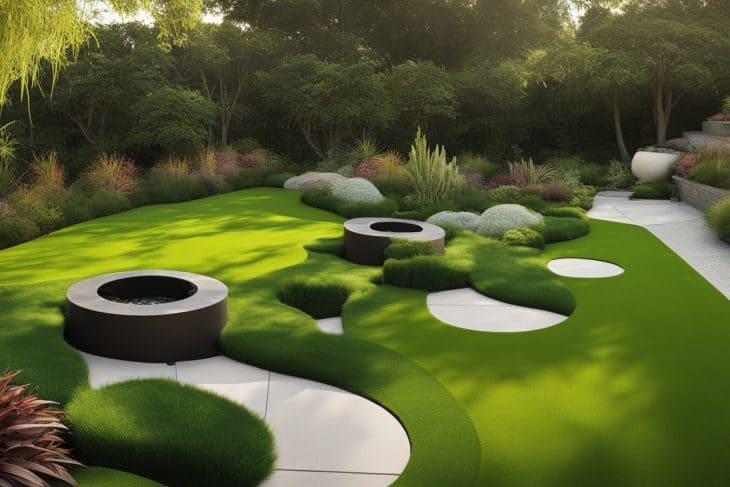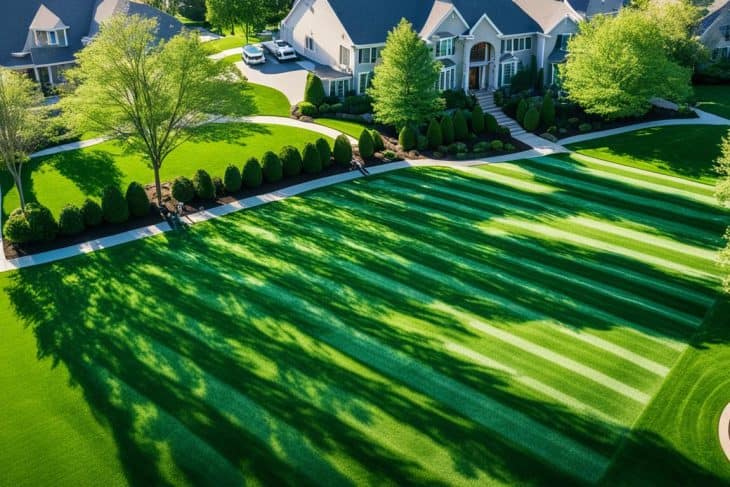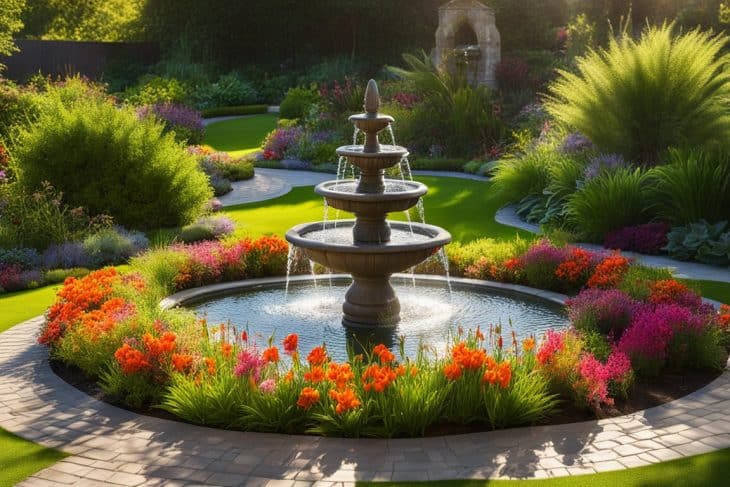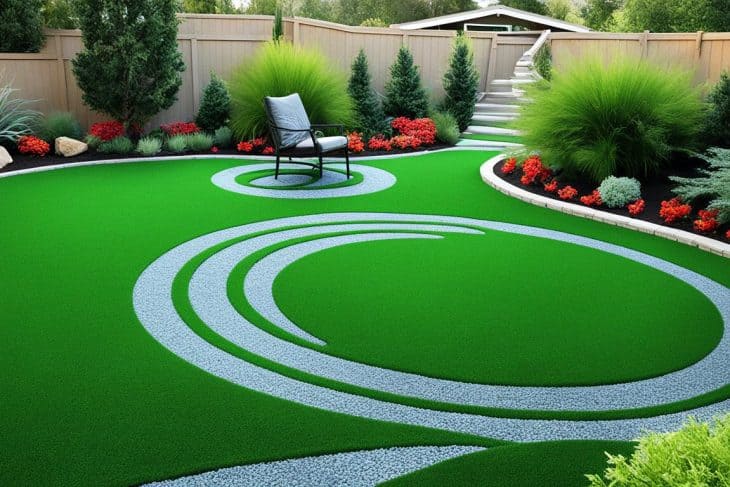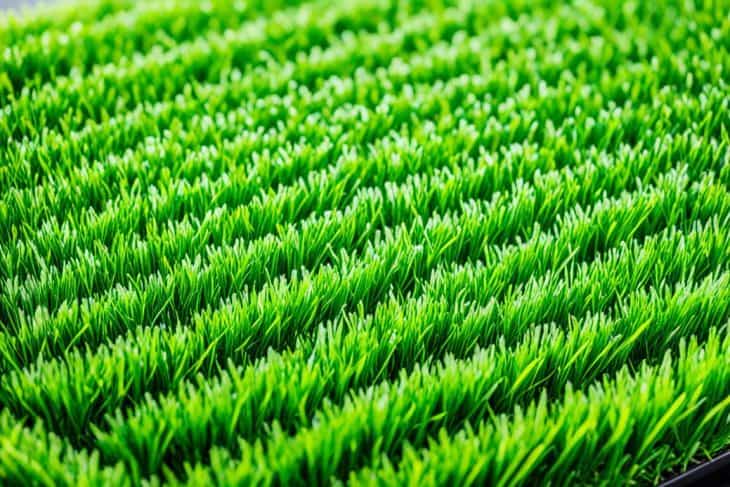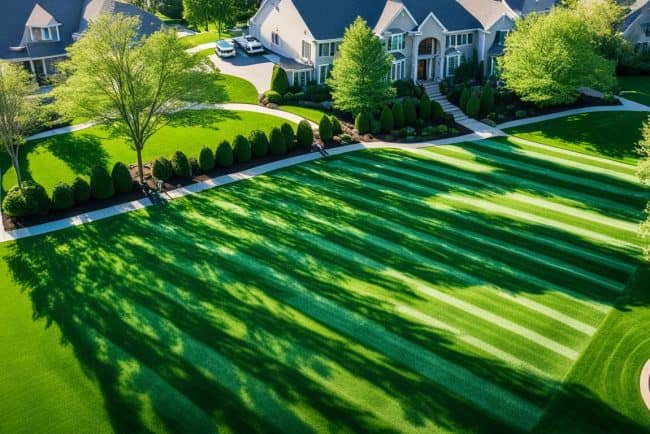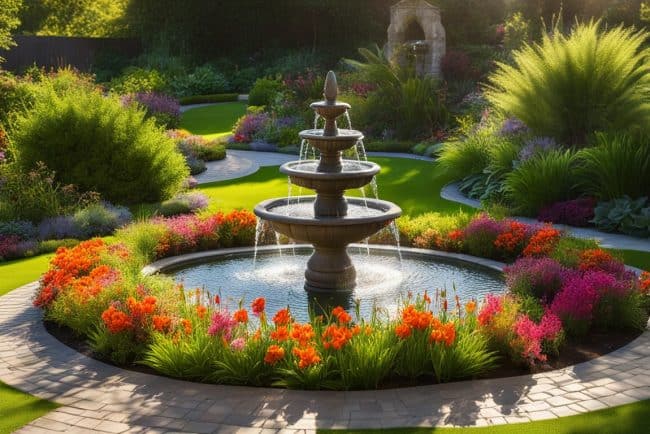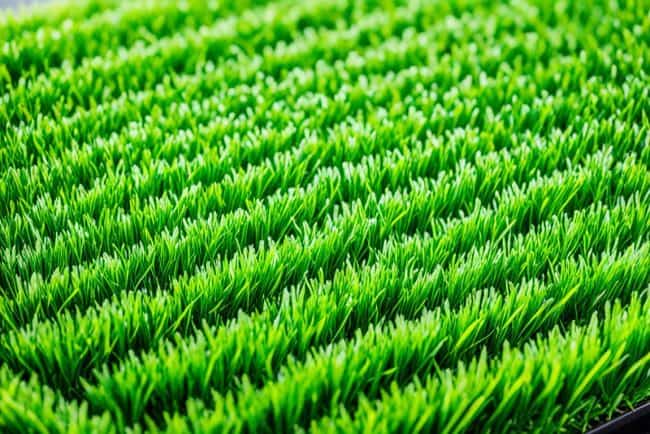Did you know a gas-powered lawn mower used for an hour is as polluting as driving 11 cars? This fact shows we need sustainable lawn alternatives. Looking into this, it’s clear that traditional lawns harm our planet. They use too much water and emit too much from gas equipment. But, there’s hope. Artificial grass is a green solution. It looks good without needing as much care as regular grass.

This article will cover the bad side of usual lawns and the good side of eco-friendly options like artificial turf. By choosing wisely, we can have great yards that are kind to earth.
Understanding the Need for Sustainable Lawn Alternatives
More people now know about the bad effects of regular lawns on our planet. This has made them look for greener options. Regular lawns look good but use too much water and need lots of care. In New York State, home lawns cover over 2.8 million acres. They use a lot of water and add chemicals and pollution to our environment. Picking yard choices that are better for the Earth can really help make things better.
Environmental Impact of Traditional Lawns
Regular lawns need a lot of things to grow. They need so much water, even more than one inch every week when they’re growing a lot. This uses up a lot of our local water. Also, when we use fertilizers and bug killers, they can wash away and pollute our water. And using gas lawn mowers puts out pollution. It’s like having eleven cars running for an hour. This all hurts our local nature areas and adds to big environmental issues.
Benefits of Switching to Artificial Grass
Going for artificial grass has some big pluses for the environment. It doesn’t need water or chemicals, so you save water and keep chemicals out of our water. Artificial grass stays green all year without needing to be fixed up. This means you can have a nice yard without much work. And you help the planet by choosing a yard that’s good for the Earth. By choosing artificial grass, you make your outdoor space nice for you and better for the environment.

Sustainable Lawn Alternatives: A Variety of Choices
I’m looking into ways to make outdoor spaces better. I’m interested in sustainable lawn options. These choices make yards look better and are good for the planet. By picking groundcovers, native plants, and wildflower meadows, I help the environment. I also cut down on yard work.
Eco-Friendly Groundcovers
Eco-friendly groundcovers are great instead of regular grass. Plants like creeping thyme and clover need little attention. They fight weeds and add to the area’s wildlife. Clover, for example, helps the soil and cuts the need for artificial plant food. Moss, growing well in shade with little water, adds beauty.
Native Plants as Lawn Alternatives
Using native plants saves water and effort. These plants are tough and use less water. For example, cardinal flower does well in the Northeast. Butterfly milkweed is good in the Southeast. These plants support local animals, making my yard more varied with less work than grass.
Wildflower Meadows for Low-Maintenance Landscaping
Choosing wildflower meadows means less work and more beauty. These meadows do well in the sun with hardly any mowing. They’re good for bees and other wildlife, improving my garden. Wildflower meadows also use less water than regular lawns. They’re a great choice for helping the planet.

| Type | Benefits | Maintenance Needs |
|---|---|---|
| Creeping Thyme | Low water requirements, attracts pollinators | Minimal, no mowing necessary |
| Clover | Self-fertilizing, reduces need for chemical fertilizers | Very low, little watering needed |
| Moss | Ideal for shaded areas, no mowing | None required, thrives on natural moisture |
| Native Plants | Adapted to local climate, supports local wildlife | Low, especially once established |
| Wildflower Meadows | Supports pollinators, provides vibrant colors | Occasional mowing, very little watering |
Looking into these lawn alternatives has been eye-opening. By adding groundcovers, native plants, and wildflower meadows, I can have a lovely yard. And it will be better for the environment, too.
Artificial Grass: An Eco-Friendly Option
Artificial grass stands out as a sustainable choice for landscaping. It allows us to lessen our ecological footprint while keeping our yards looking good.
How Artificial Grass Saves Water
Artificial grass is known for reducing water use significantly. It can save up to 75% more water compared to natural grass. In the U.S., where the lawn sector is worth $77 billion, opting for water-efficient solutions is crucial. Shifting to synthetic turf means saving four times the water a regular lawn would use. This is especially important in areas that often experience drought.
Durability and Low Maintenance of Artificial Turf
Artificial grass lasts longer and needs less care than natural lawns. It doesn’t need mowing, fertilizing, or pesticide treatments. Its durability and easy care make it practical and sustainable. Artificial turf looks great all year round, even with lots of use. This approach saves resources and is cost-effective, highlighting the benefits of eco-friendly choices.

Comparing Costs: Traditional Lawn vs. Sustainable Options
The savings with artificial grass are clear when comparing it to a traditional lawn. Initially, artificial turf costs more. But it leads to huge savings over time. Traditional lawns cost a lot because of watering, mowing, and chemicals. These expenses add up to thousands each year.
Long-term Savings with Artificial Grass
Artificial grass and other eco-friendly options save a lot of money. They need less water, no mowing, and no chemicals. For instance, using these alternatives means fewer air pollutants and no need for gas mowers. This cuts down on emissions and saves money. Plus, some options like clover lawns need very little water and are drought-resistant. All these factors mean more savings in the long run.
Why Less Maintenance Equals More Savings
Sustainable lawns are great because they need very little care. Once settled, many, like wildflower meadows, don’t need extra water or fertilizers. This means less work and more savings. Also, lawns that need less mowing save time and money. Clearly, sustainable lawns are good for the planet and your wallet.

